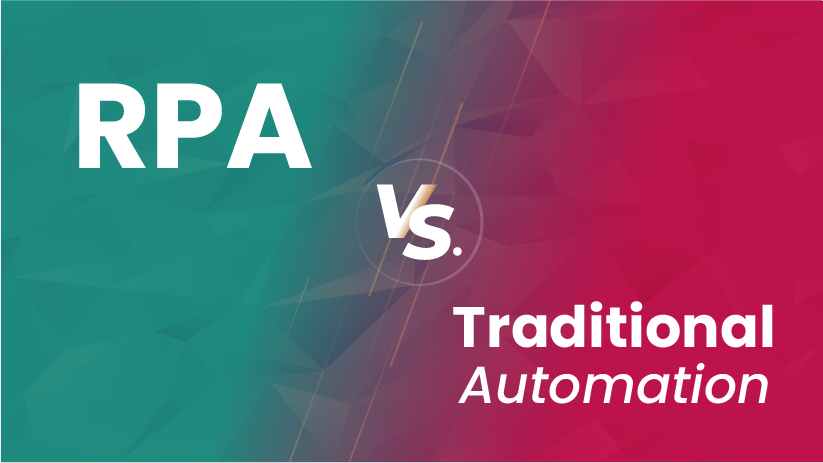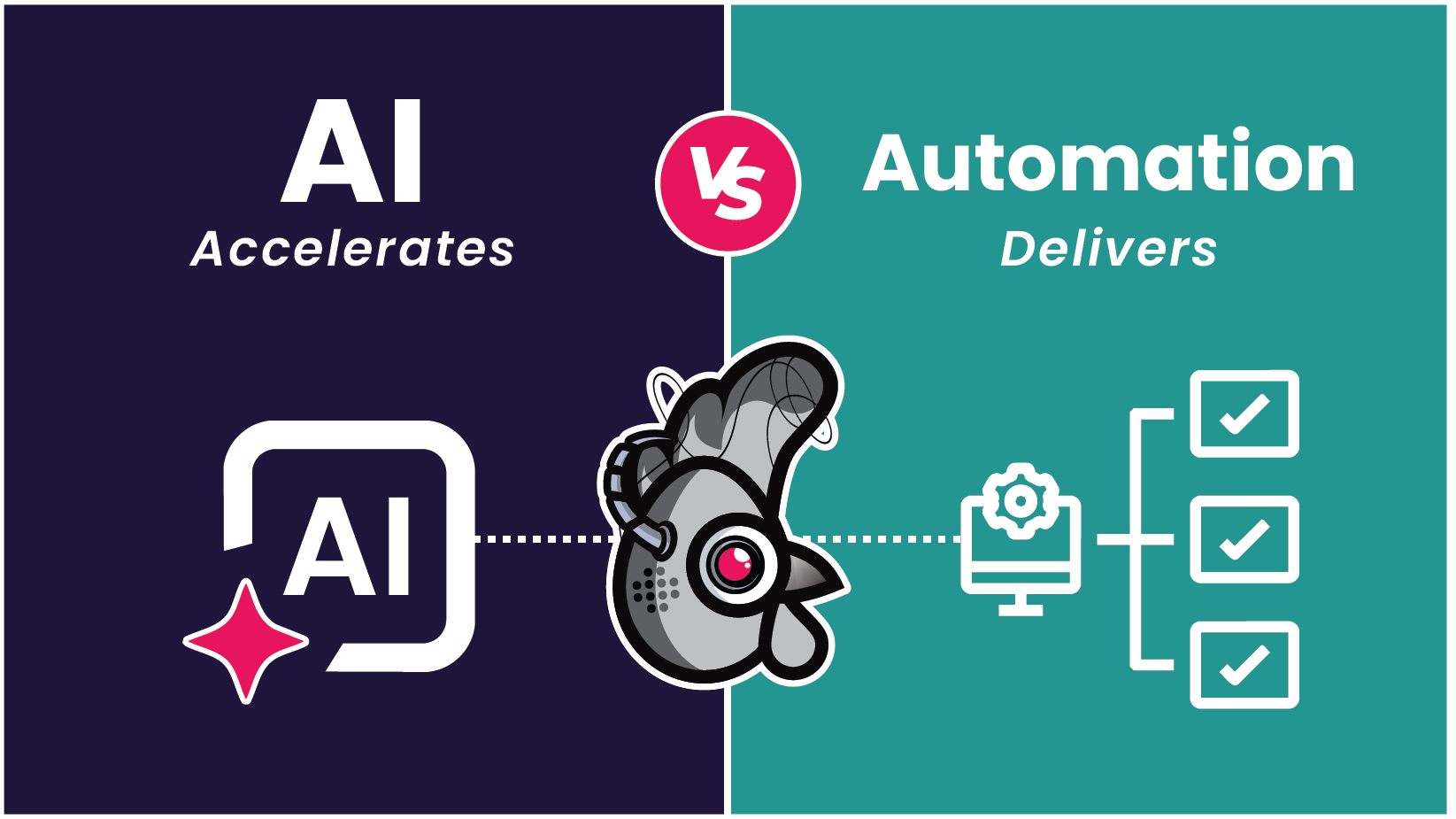RPA vs Traditional Automation: What MSPs should know
Compare RPA vs traditional automation to find the right fit for MSP workflows, scale, and tools—learn how MSPs build smarter automation with Rewst.

Automation is no longer a nice to have. It plays a core role in how most teams operate today. Many organizations use automation to simplify daily work, whether it’s triggering Slack messages with Zapier, routing form submissions, or syncing data across platforms. These platforms help streamline routine operations and free up time for more strategic tasks.
These tools help automate processes, reduce the need for human intervention, and handle repetitive tasks in routine operations. By reducing manual input, teams can focus on more strategic work.
MSPs face a different set of challenges.
For them it isn’t just about time. It’s about managing dozens of environments, reducing manual processes (and their inevitable errors), and meeting SLAs across clients with completely different tech stacks.
Generic automation tools like Zapier, n8n, or Power Automate weren’t built for that world. Sure, they help you automate processes, handle repetitive tasks, and reduce manual input, but they break down when you’re supporting 30 clients with different toolsets and few native integrations.
This is where MSP-specific robotic process automation (RPA) changes the equation. Platforms like Rewst are purpose-built for service providers, with native multi-tenancy, support for PowerShell, 70+ MSP-focused integrations, and 100+ prebuilt automations built for the MSP world.
The difference between RPA and traditional automation comes down to more than features. It’s about fit. This blog explores what sets MSP-focused automation apart and how service providers are using it to move faster, reduce overhead, and scale with confidence.
MSP RPA vs traditional automation
Most automation platforms target horizontal use. They aim to serve various industries with general business logic that works across departments like marketing, HR, finance, and IT. That flexibility helps in some environments but creates tradeoffs, especially for MSPs.
Many MSPs look for automation that can scale with hybrid environments, complex client needs, and varied toolsets. They rely on platforms that support how they deliver service across dozens of environments, often in a hybrid infrastructure, with toolsets that vary from client to client. Traditional automation platforms like Zapier, n8n, and Power Automate usually overlook that reality.
MSP RPA platforms liek Rewst provide a different path. Purpose-built for MSPs, Rewst uses a development roadmap shaped by real-world use cases. Instead of retrofitting general automation to meet MSP needs, Rewst builds with those needs in mind from the ground up. In fact, Rewst includes over 100 prebuilt automations for common MSP needs like onboarding, offboarding, billing reporting, and more — reducing the time it takes to see value. Generic automation platforms often require teams to build from scratch, creating a larger upfront investment in time and resources.
Gareth Smith experienced this shift firsthand. He used Power Automate and PowerShell to streamline onboarding early in his automation journey. That approach worked in limited cases. Scripting demands and fragile logic slowed progress. When he discovered Rewst, the structure and flexibility helped him move faster, even working part time on automation. He built one workflow per day and quickly began managing more complex systems within a week.
Brian Simpson at Karpel Solutions followed a similar path. Power Automate lets them create accounts for cloud-based clients, but on-prem clients still require manual steps. Rewst helped them build a single onboarding process that handled both environments. They cut onboarding time from 15 to 20 minutes to just 1 to 2 minutes per user and eliminated most of the repetitive tasks in the process. This change led to measurable cost savings and a noticeable boost in operational efficiency.
These stories reflect a larger shift in how MSPs think about RPA. This conversation focuses less on features and more on alignment. Rewst supports how MSPs already operate and helps them make RPA part of everyday service delivery.
RPA that scales with the MSP stack
Many traditional platforms support automation within a single organization. The team structure and set of integrations often influence how we build and operate those systems. That model starts to break down when MSPs try to scale across multiple clients, each with different environments, toolsets, and policies.
General-purpose platforms focus on popular SaaS products. They often integrate with Slack, Google Workspace, and Microsoft 365 applications. However, these platforms rarely offer native integrations with MSP-specific systems such as ConnectWise PSA, IT Glue, SentinelOne, or Pax8. When gaps appear, teams often rely on custom scripts or middleware, which increases the time to build and introduces more variables to manage.
Rewst includes integrations with over 80 systems MSPs commonly use. These integrations span cloud platforms, on-prem infrastructure, RMMs, PSAs, documentation systems, and licensing vendors. They enable teams to streamline workflows while reducing the risk of errors and inconsistencies across environments. This range enables MSPs to create workflows that reflect their current processes without redesigning them.
Gareth Smith’s team used that flexibility to standardize a client-facing portal for change requests. The logic behind the portal stayed consistent across clients. The only differences came from the environment-specific variables Rewst handled within the workflow.
Brian Simpson’s team applied a similar approach to license audits and offboarding. They started with prebuilt automations and gradually adapted them to support broader use across clients. The team integrated these workflows into business operations to increase consistency and reduce overhead.
This difference influences how MSPs approach RPA vs traditional automation. General-purpose automation tools often fall apart when scaling across multiple clients. Because they lack native multi-tenancy, teams are forced to manually duplicate and update workflows for each client — a maintenance nightmare that drains time and increases the risk of errors. In contrast, purpose-built RPA platforms like Rewst offer true multi-tenancy, allowing you to build a single workflow and run it seamlessly across your clients.
Empowering teams: from learning to execution
Many general-purpose automation platforms require users to have a scripting or software development background. For teams that want custom automations, these platforms require knowledge in unfamiliar or proprietary languages. Power Automate uses Workflow Definition Language (WDL), while n8n uses a language called Tournament. RPA like Rewst offers scripting flexibility on top of its low-code visual builder, including native support for PowerShell, the scripting language most widely adopted by MSPs, as well as Jinja. Teams can customize in the language they already know.
With general-purpose platforms, teams may assign one or two technical specialists to build and maintain workflows. That model slows adoption, creates bottlenecks, and limits how broadly a team can use automation in their day-to-day.
MSP-focused platforms take a more inclusive approach. Rewst offers multiple paths to learning and building, including Cluck University, live Open Mic calls, and real-time support through its Discord community. The same spirit of shared learning continues at FLOW, Rewst’s annual automation conference, where builders and leaders connect to exchange ideas and push automation forward.
These resources provide practical examples and deliver quick feedback that helps users build skills over time. Their user-friendly design makes it easier for teams of all skill levels to get started.
Gareth Smith took that path. Without a development background, he started by working through prebuilt workflows. He reverse-engineered user onboarding templates, adapted them to his environment, and developed a clear understanding of how the platform works. That foundation enabled him to build more advanced systems with confidence.
Brian Simpson also used the community to accelerate his progress. A conversation in The Kewp clarified how list compressions worked. He used that insight to streamline workflows and resolve issues more quickly, helping the team stay focused on proactive work.
This contrast becomes clear when teams compare RPA vs traditional automation. Traditional platforms often concentrate expertise in a few hands. In contrast, MSP-focused RPA platforms prioritize improving efficiency by making automation more accessible and collaborative.
Choosing a platform that supports how you work
Choosing the right automation platform involves more than checking off technical specs. MSPs deal with complex environments, client variability, and high expectations for consistency. These realities require more than broad functionality. They require alignment with how your teams deliver service.
RPA platforms designed for MSPs prioritize that alignment. Rewst, for example, supports scalable, maintainable, and collaborative automation that reflects how MSPs work. Teams can extend automation without needing to start from scratch for each client. They can share ownership and build workflows that evolve as needs change.
This difference matters when considering RPA vs traditional automation. Look for the platform that fits your model, supports your pace, and reflects your goals, not just the one with the most features.
Latest Blog Posts
Subscribe to Our Blog
Stay up to date with the latest on our platform, automation, events and news.
We're committed to your privacy. Rewst uses the information you provide to us to contact you about our relevant content, products, and services. You may unsubscribe from these communications at any time.








